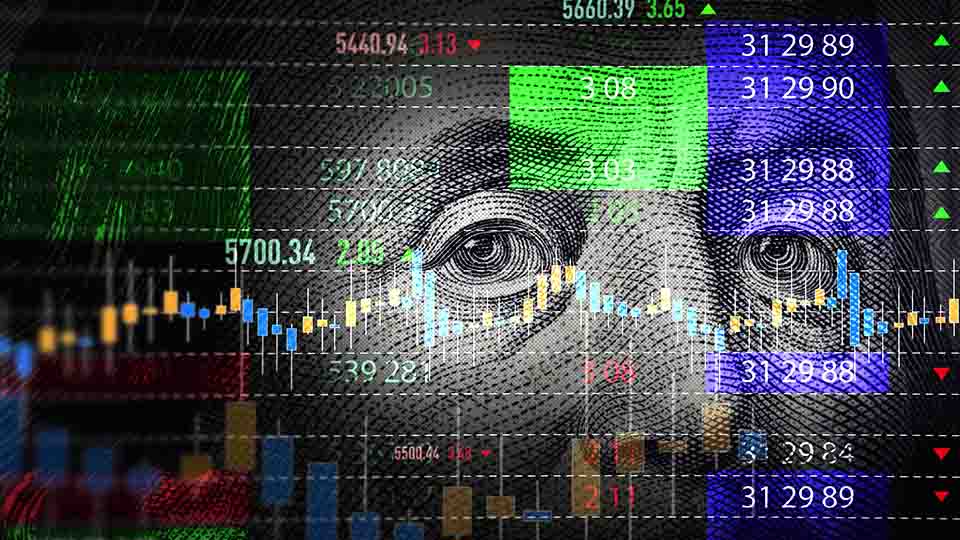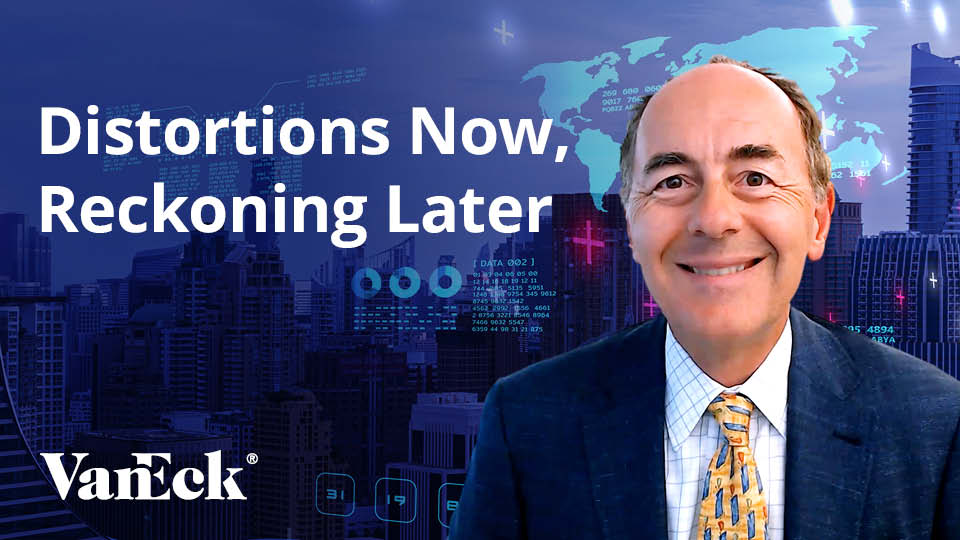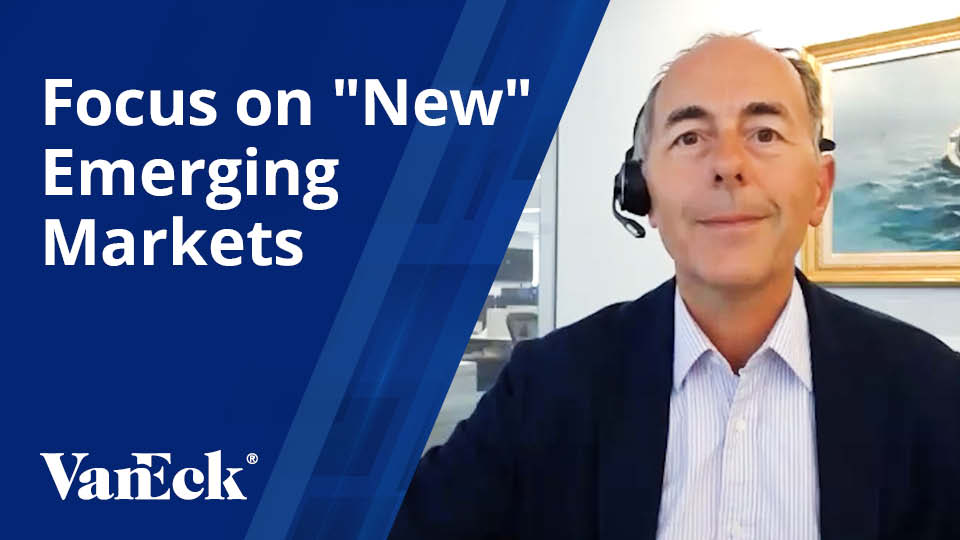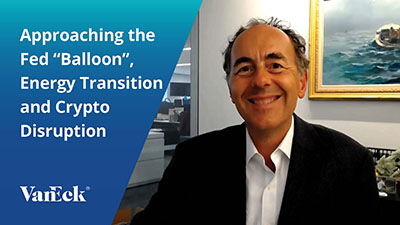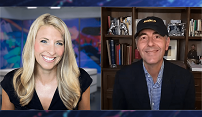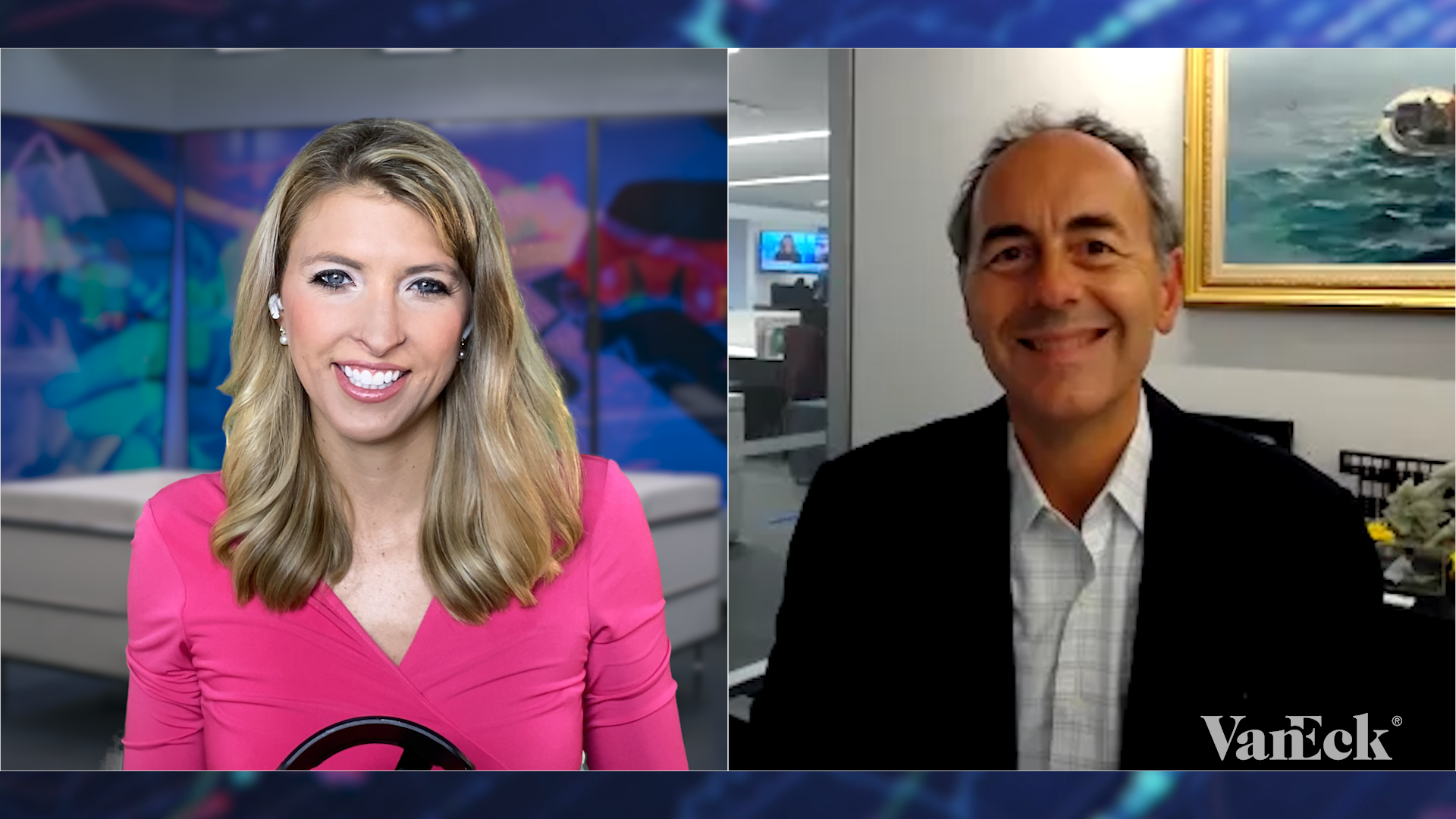2018 Investment Themes: Focus on Emerging Markets
07 November 2017
Watch Time 09:13
2018 Investment Themes: Focus on Emerging Markets
TOM BUTCHER: I’m here today with Jan van Eck, CEO of VanEck who has joined me to talk about his investment themes for 2018.
Jan, thanks so much for joining me. What do you see as some of the biggest investment opportunities in 2018?
JAN VAN ECK: There is a bunch of things we have to talk about: Where can you make money? What’s going on with China? What’s going on with Bitcoin? But let’s start with the biggest opportunity for making money, which I think lies in emerging markets equities. So this is an asset class (we entered the year, U.S. equities had done so well for five years, people were underweight international and emerging markets), they outperformed this year pretty dramatically. We think it’s very early innings for emerging markets equities. The point I like to make is that it is just such a different asset class today from what it was five years ago. You shouldn’t even use the same words. I say that because, now, almost 70% of that index is targeted towards Asia. So it’s almost an “Asia regional fund” because China, India, Indonesia, all these countries have become such a big weight. That’s number one. Number two: the reason we think it’s a great opportunity is that cash flow in 2018 is expected to grow 50% next year for Asian stocks. That’s just a tremendous cash gusher which we think will be reflected in stock prices.
BUTCHER: And thinking about emerging markets, how does China fit in and what’s happening there? And where do you see the opportunities there?
VAN ECK: Coming into the year we talked about “old” China. There had been this tremendous growth in capacity for steel and all other sorts of basic industries in China. That was causing a lot of trade tensions with U.S. (with the Trump election), and with Europe. What’s happened this year is that Xi Jinping was confirmed for another term in office. (It just happened this last week.) He has been putting the brakes on old China, reducing capacity and luckily there was no sort of immediate trade war between U.S. and China. So, basically China and the U.S. are aligned, towards reducing what they call supply side returns, reforms, and reducing capacity in old China. So that’s great. And then really the upside change in China was the emergence of “new” China, which we all knew about, “Alibaba Technology” for instance. That has, first of all, been reflected in the Chinese economy. Growth was higher than people thought. But, more importantly, the stock market has turned completely upside down in China: technology is now the largest sector. It’s over 30% of the equity markets. Things like energy and financials have become less important. So, really, what people have been talking about for 10 years finally happened. A big switch happened in 2017, new China is emergent over old China.
BUTCHER: One area where things don’t seem to have changed very much this year is interest rates. What do you see happening in 2018?
VAN ECK: The Fed stayed on course. They said they were going to keep tightening. I think the question for 2018 (they’ve said that they’re going to reverse quantitative easing to the tune of a $1 trillion, a little bit next year, let’s call it half a trillion in 2018, half a trillion in 2019), is how will the markets take it? Now, obviously the news is in the market because they’ve announced it. It’s hard to think that that won’t cause a little bit more pressure on interest rates. What we’ve suggested this year is go for yield alternatives like emerging markets and high yield, not something that’s just government Treasuries and interest rate risk, duration risk, we’d definitely continue that enthusiasm for this year.
BUTCHER: Volatility has been at historically low levels. Interest rates go up, how do you see volatility changing in 2018?
VAN ECK: I think this is one of the worries I have about the market. And I can’t say I have all the answers. But let’s just talk about the dimensions of the problem. Volatility as you said is really low. The fact I like to focus on is that there is a lot of money trading volatility. People used not to trade volatility, but there have been estimates. There’s a hedge fund, Artemis, they say there’s up to $2 trillion. Basically, volatility triggers their trading. So let me explain that. If you’re short volatility or you’re writing put options, it’s just another way of getting yield. Interest rates being so low globally, people have been searching for yield in all these different kind of spots. (It’s a little bit of a chasing for yield by writing puts.) That’s a lot of money: the question is, if volatility suddenly spikes, what will happen to that $2 trillion? Will it go from being kind of a calming effect on the markets, which this theory has, to being an accelerant of more volatility as they start taking money out of those trades? We don’t know and can’t predict it for 2018. But it’s certainly money that’s working in the markets that could backfire or have effects. That’s worth paying attention to.
BUTCHER: You said that was just one of your worries, have you any other ones?
VAN ECK: There’s a lot of money (again this is something that’s not widely tracked, although we know it’s hundreds of billions, if not, trillions of dollars) chasing what we call smart beta, or factor investing. Something that was not commonplace maybe five years ago. But now there’s billions of dollars in single factor ETFs. It’s just something that one worries about when one sees people doing something they used not to do, i.e., whether that sort of backfires on them or disappoints them.
BUTCHER: Looking at something that’s been in the news really pretty much the whole of this year –digital assets. Do you see them being in the news next year? And do you see any particular trends that interest you?
VAN ECK: I think it goes to the heart of who VanEck is. VanEck tends to look at what’s going on in the world, historical trends, technology, what have you. And then say: “Okay, what are the opportunities in the financial markets, or the risks?” It’s how we got into gold back in the 1970s, because we saw this inflationary trend that wasn’t really visible. So, with digital assets, you have to look at it because it’s such a potentially revolutionary technology. It’s sort of peer-to-peer databases, if you will, distributed ledgers that could really revolutionize how many things are being done. Now, does that have a lot of investment implications or opportunities? I would say only for higher-risk portfolios should you take a small position in digital assets. It’s not a mainstream asset class by any means. But I don’t think it should be dismissed, because if it works as a technology then there’s upside to it. So the biggest issue that we focus on, or I focus on, is governance. Can a crowd-governed database work, as opposed to one run by a private company like Microsoft, or Salesforce, or something like that? Linux is an example of a crowd-sourced software solution that’s worked.
BUTCHER: If there was one last thing that you would leave with investors for 2018, what would that be?
VAN ECK: Too many portfolios were underweight emerging markets coming into the year, and international. They haven’t caught up. They’re too worried about being late to the party. We think there’s years to go. When you look at what’s happening in the world, so many people live in the emerging markets, so much of the growth in the economic activity is going to be there, that’s easily justified if you look at long-term trends.
BUTCHER: Jan, thanks very much. Should you wish to learn more about VanEck, and indeed, some of the issues that we’ve been looking at, such as developments in China, in the emerging markets, or perhaps the effect of the hurricanes on the muni market, please do visit the VanEck site. And, indeed, subscribe to the insights that it produces.
